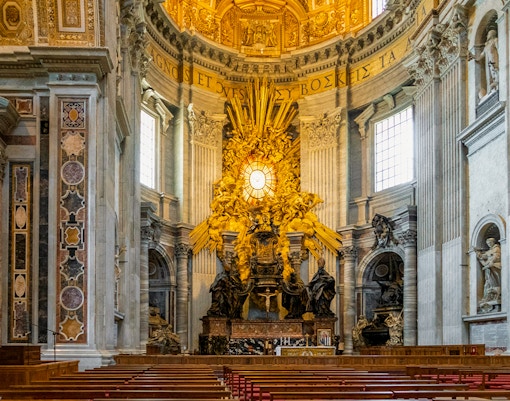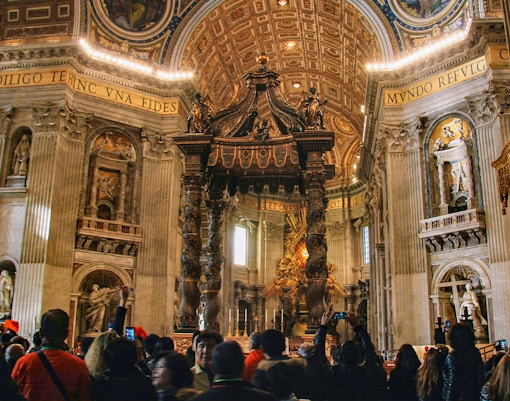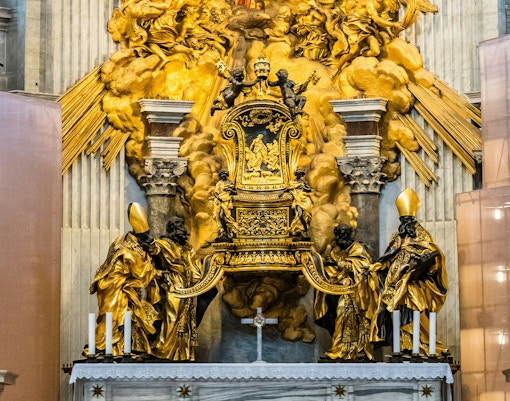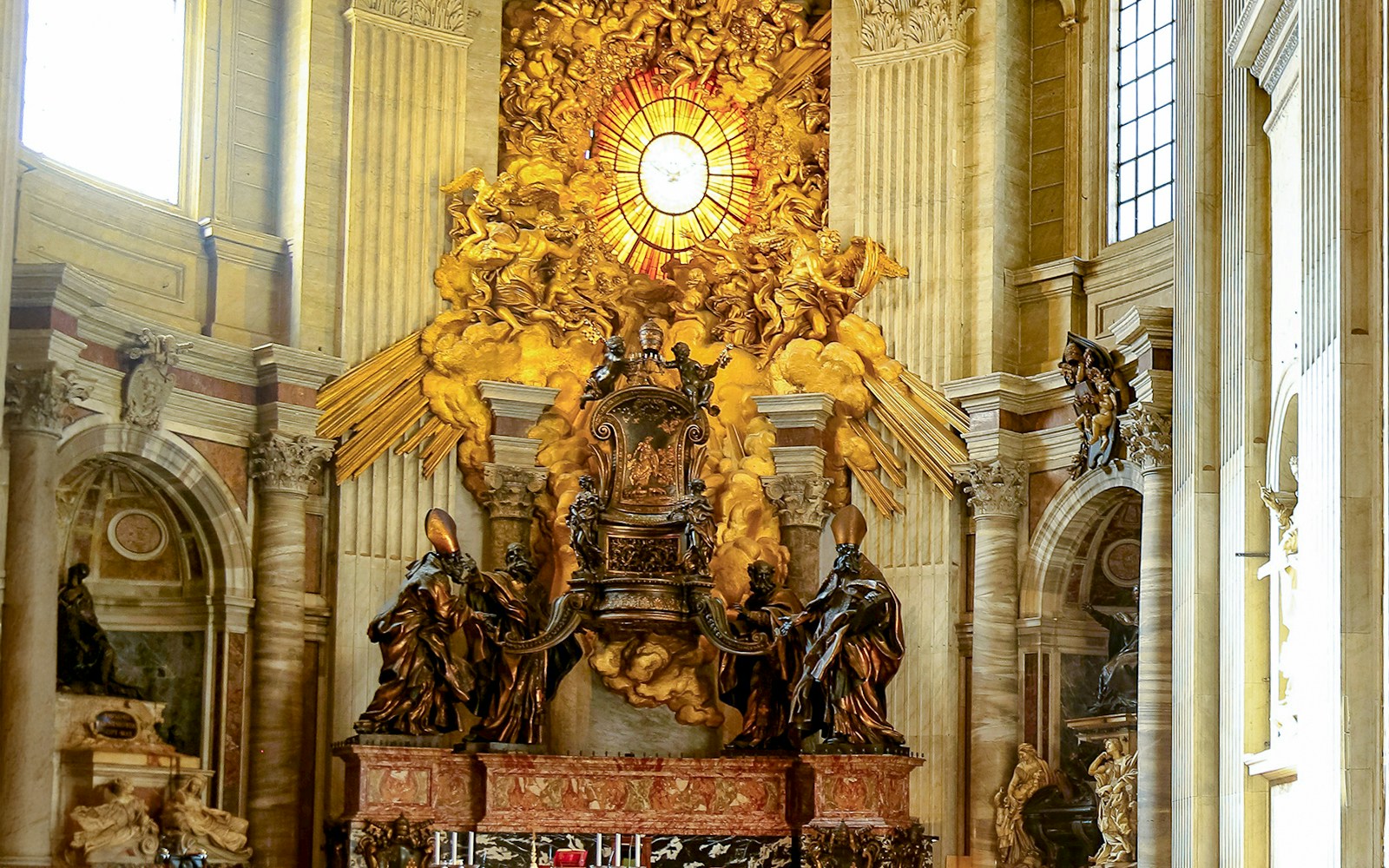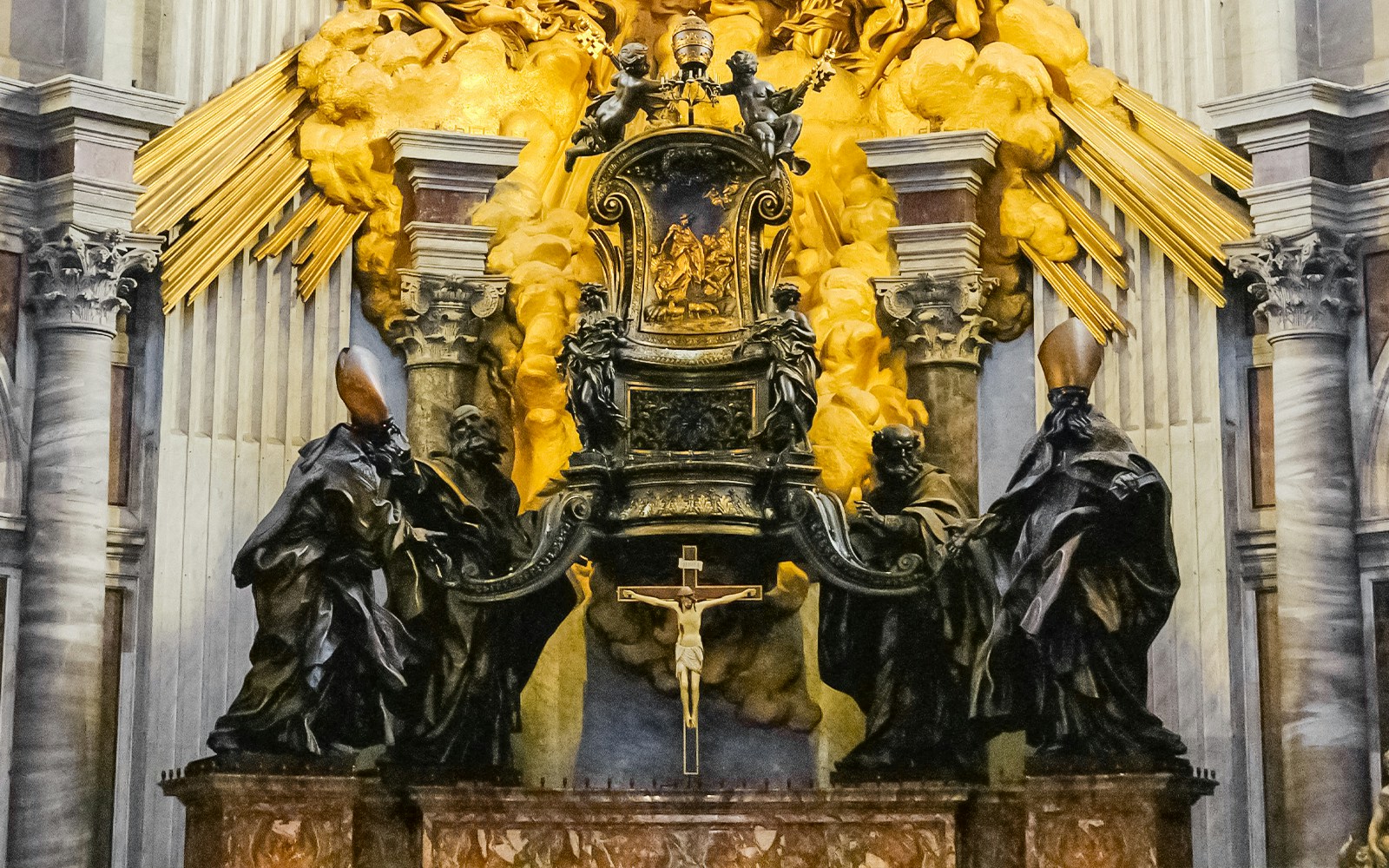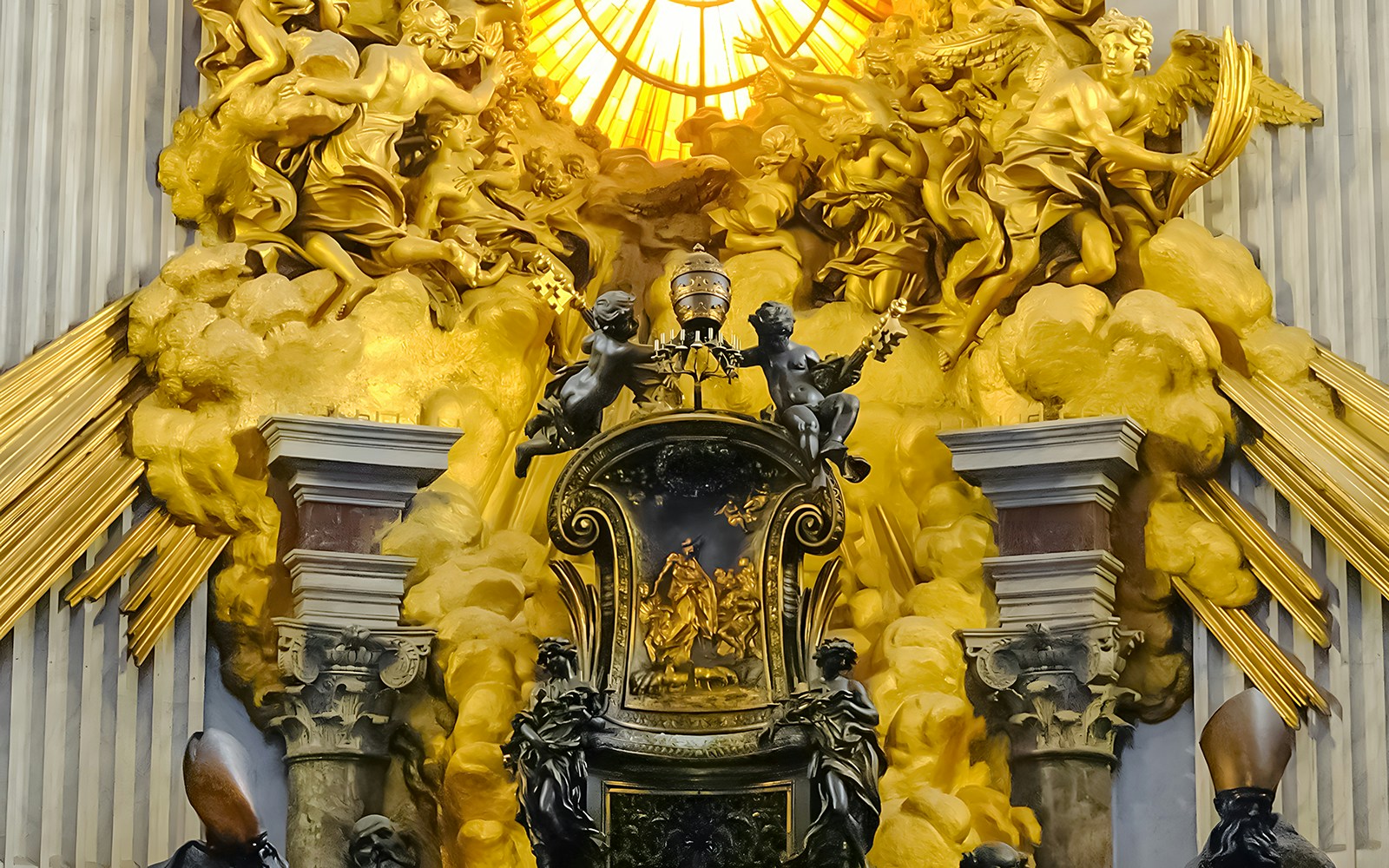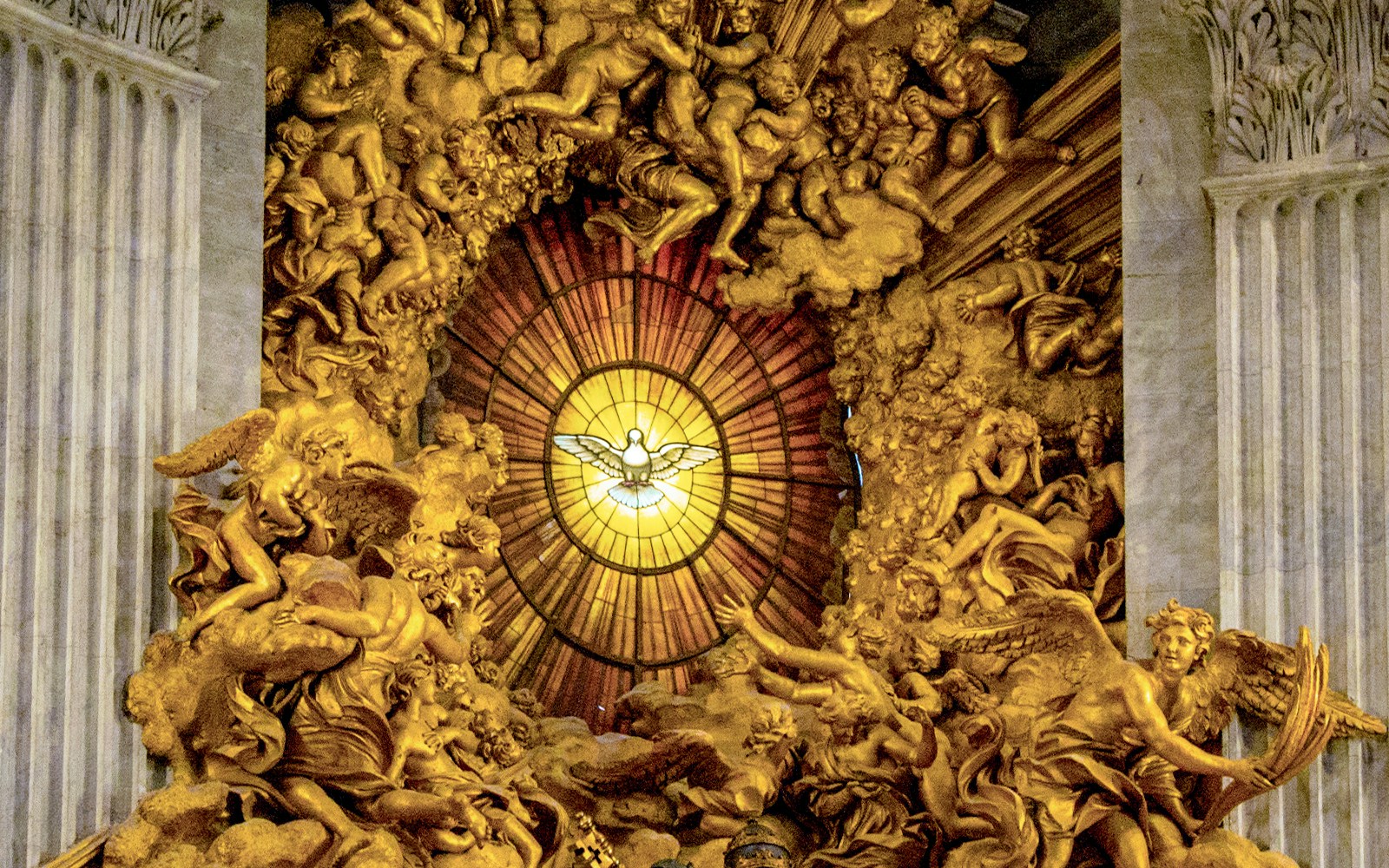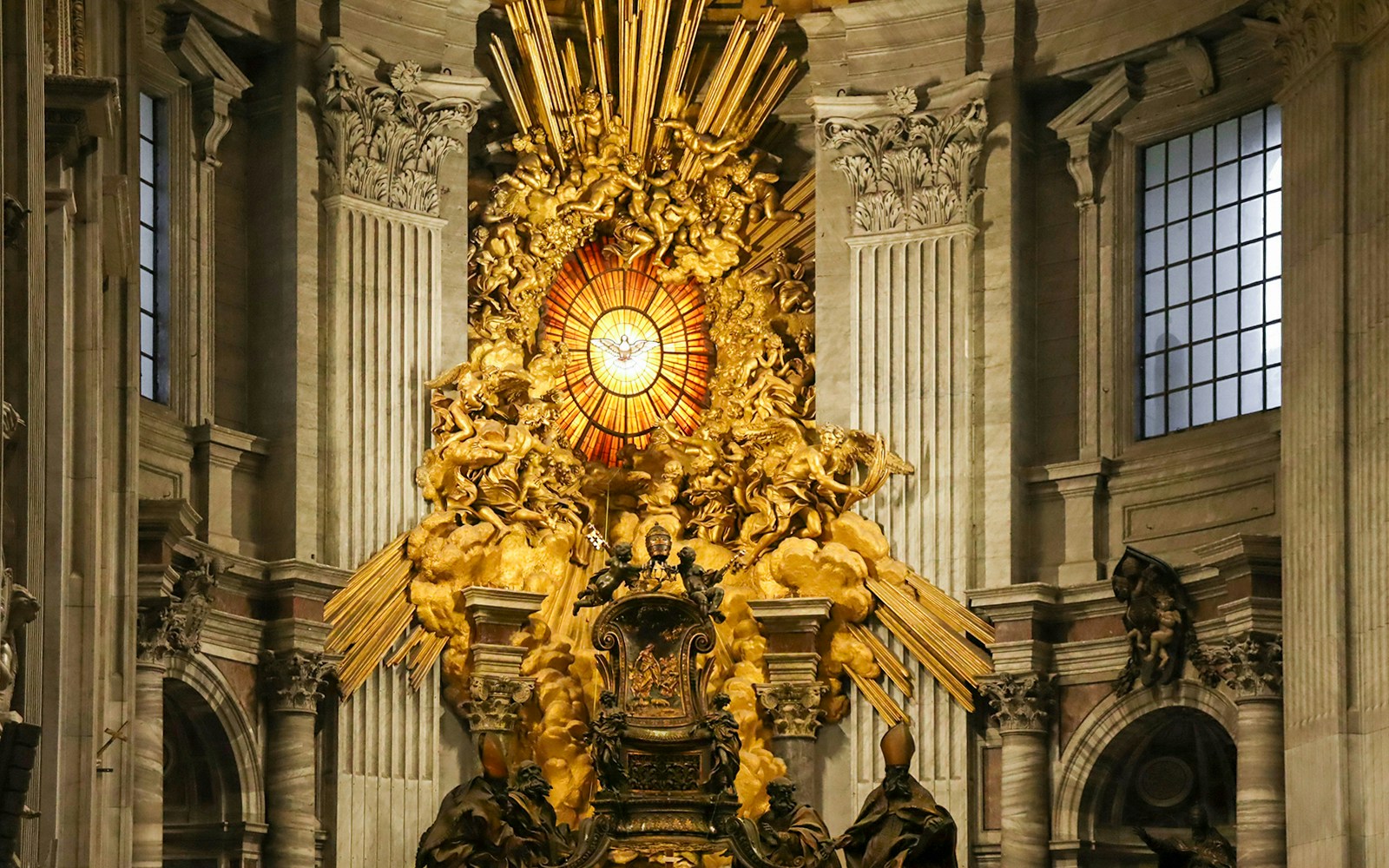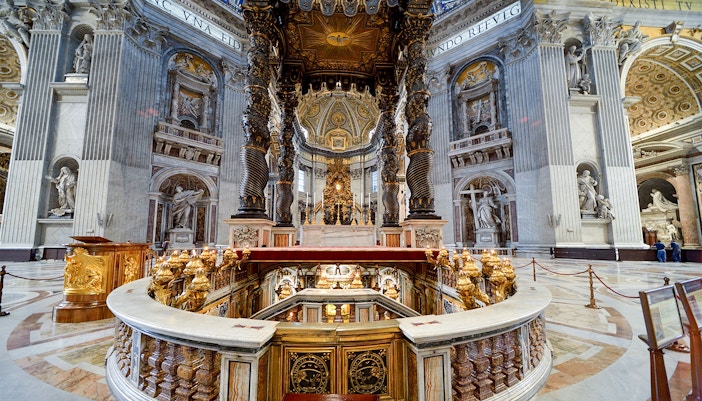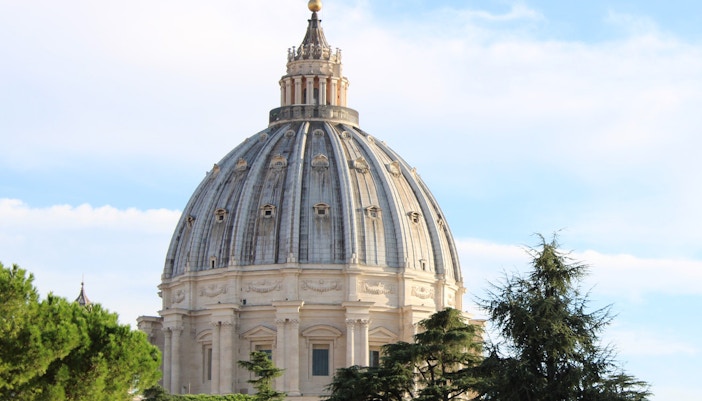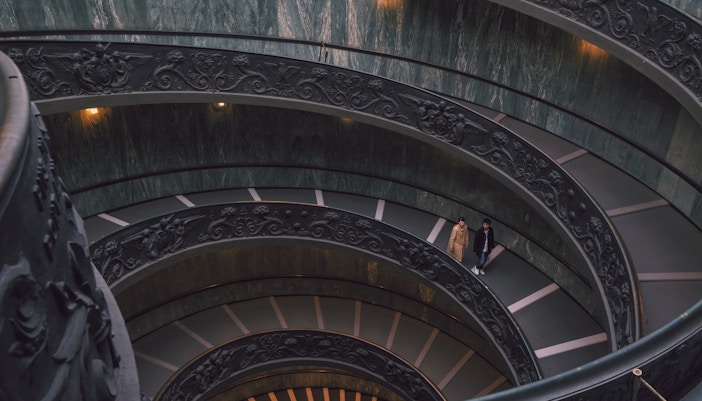👑 The wooden throne, known as the Chair of St. Peter, was a gift from Emperor Charles the Bald (the Holy Roman Emperor) to Pope John VIII (the head of the Catholic Church) in the year 875, showing the strong ties between the empire and the church.
Did you know?
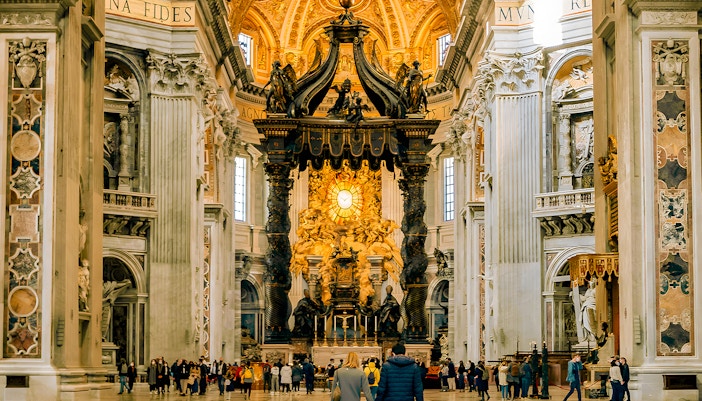
🪑 During the Middle Ages, it became a tradition to display St. Peter’s Chair once every year, allowing the faithful to see this important symbol of the pope’s authority and the church’s long history.

🕊️ When a new pope was elected, part of the ceremony included seating him on this ancient chair, marking the beginning of his role as the spiritual leader of the Catholic Church.

